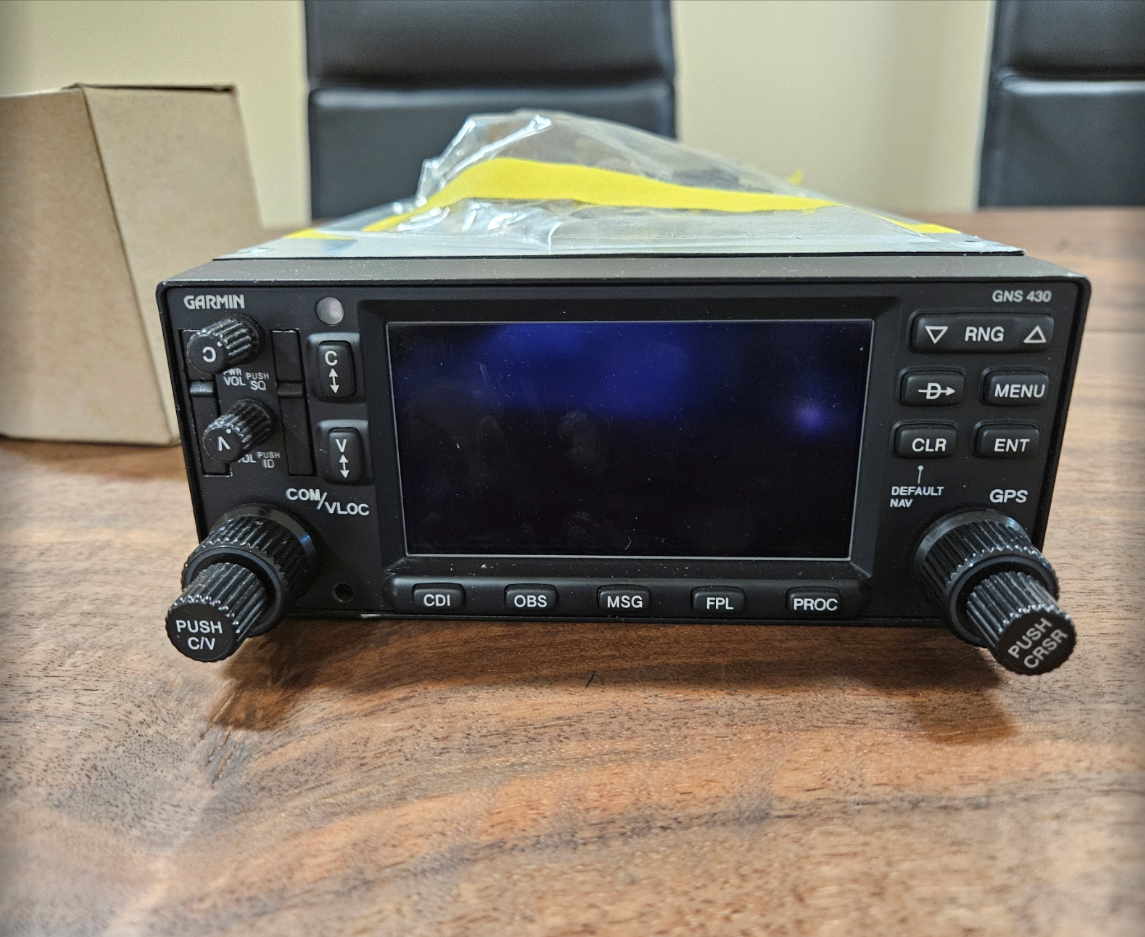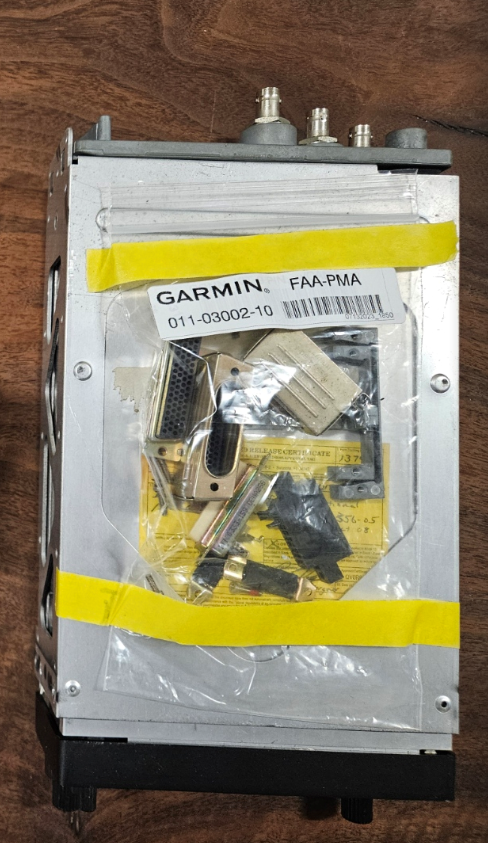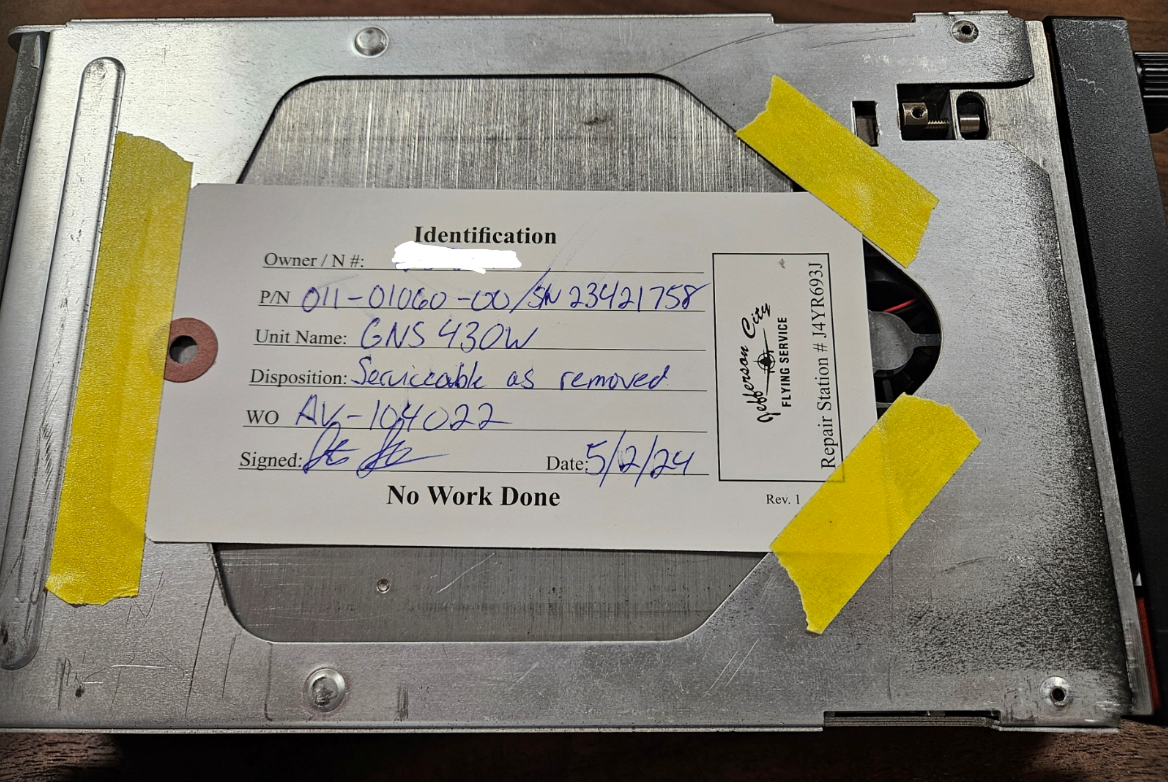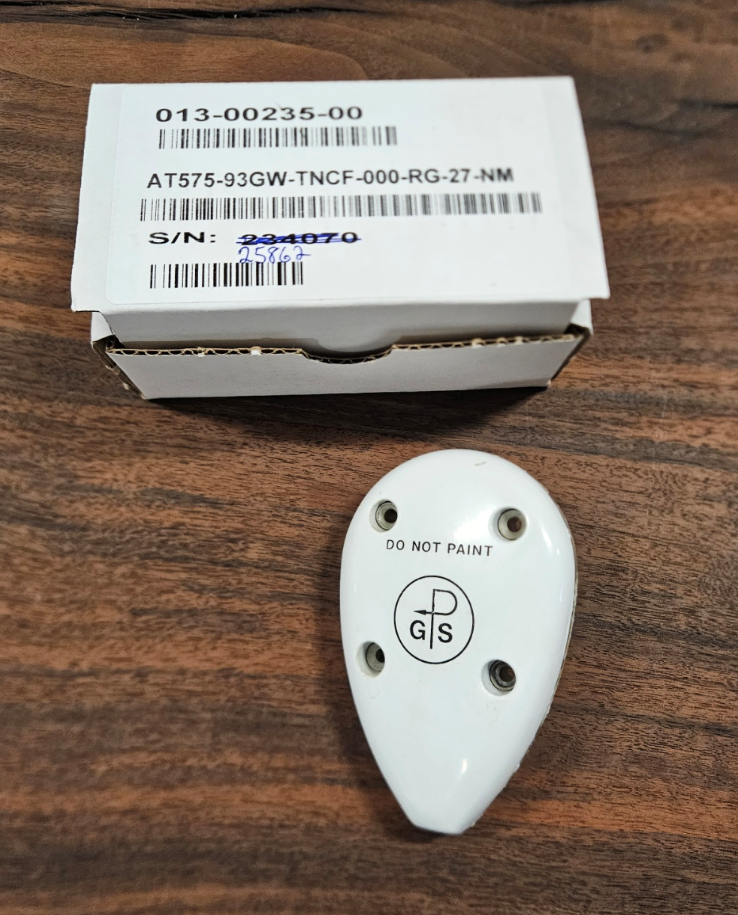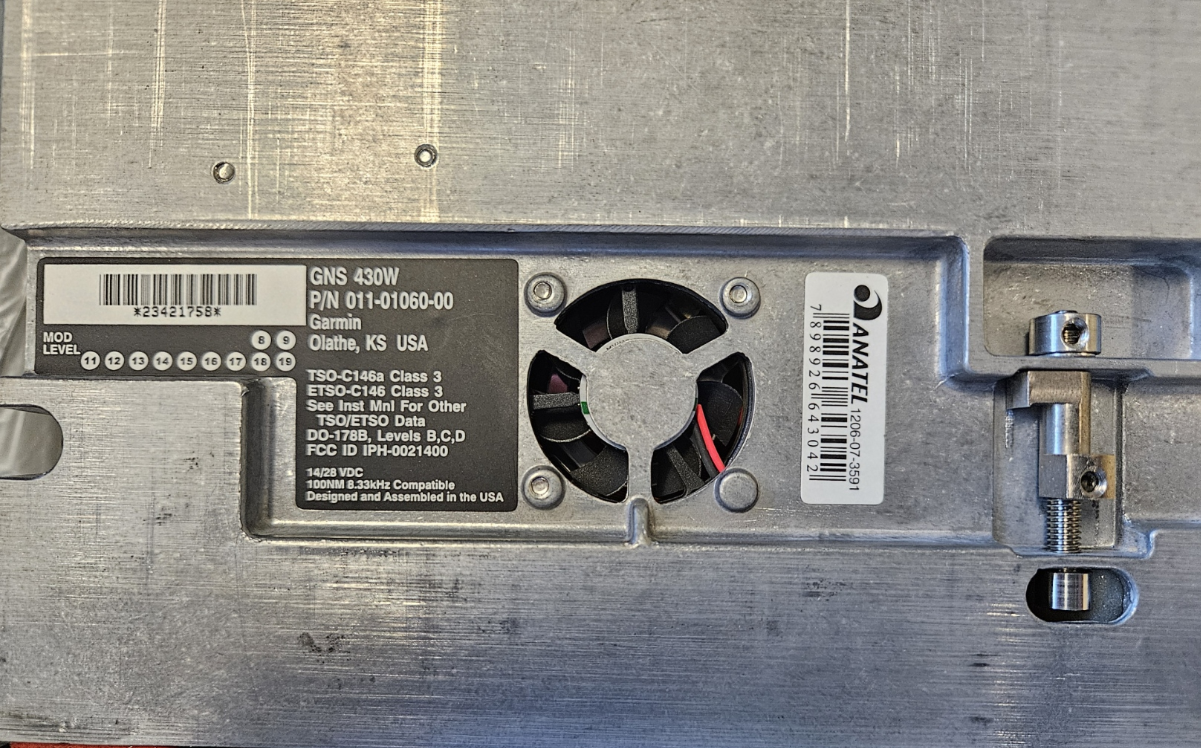-
Posts
711 -
Joined
-
Last visited
-
Days Won
5
Content Type
Profiles
Forums
Blogs
Gallery
Downloads
Media Demo
Events
Everything posted by Z W
-
In recent years, I've added a basic socket set, phillips and flat head screwdrivers, a spare fuel sump, and a spare spark plug. Just the basics, but enough to get access to the battery in the tailcone in case it needs charging or a jump, or swap out a fuel sump if one gets stuck open. I've swapped a stuck fuel sump on the ramp before. Haven't needed the spark plug yet.
-
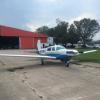
What happened to owners maintaining their planes?
Z W replied to NewMoon's topic in General Mooney Talk
I think some of what you're seeing is caused by the mechanic shortage we've all been experiencing since 2020. Shops are backed up, maintenance takes a long time, and a new or remanufactured engine can be 9-12 months out. Makes sense lots of people are trying to sell their planes in less than pristine condition. And as a buyer, you have to worry about how you'll get the catch-up work done, or where you'll source that new engine from. -
@Gee Bee Aeroproducts makes excellent door and baggage seals for Mooneys. I have a set sitting in box I have not yet had time to get put on but they seem to be excellent quality. He recently bought a baggage door and set up molds to do an extrusion to offer those as well. https://www.csobeech.com/GeeBee.html
-
I haven't had any conversion-related issues in about 12 years of operations that I can recall. It can be a little tricky to figure out if you need the 231 parts or the 252 parts in the illustrated parts catalog, but it's always one or the other. And often, there are several different part number options even for just the 231's, so you'd probably be figuring it out anyways. In general, you use the 231 parts for electrical stuff, and most of the airframe, and the 252 parts for firewall forward. I believe that's all they did for the STC - replaced 231 parts with factory Mooney 252 parts. I have never come across any non-factory or one-off custom-fabricated parts. Some of the unique 252 parts associated with the TSIO-360-MB and SB engines have become harder to find, such as the intake airbox. The factory has supposedly been working on making us one for over two years now. Ours has been repaired and rewelded multiple times, and the last time, essentially rebuilt. But this is a problem you'd have with any 252 or Encore, not just a 262. There just weren't all that many ever made. Have always kept the old original part number starter and avoided the lightweight due to reports on here of issues. Still have the vacuum speed brakes and step, even though that's all the vacuum pump runs now. I've heard some conversions don't have all the parts changed. Examples include the fully variable cowl flaps, rounded side window inserts, extended range tanks, vacuum step, second alternator, maybe some others. As far as I can tell, ours got everything, but you might investigate closely if you were shopping another one. I don't think any of it would matter a whole lot to me. The biggest feature is the MB engine and the ability to take off full throttle without concern of overboosting.
-
Started with the OxySaver Cannulas. They were fine. Went to the O2D2. Like it much better. Mostly because the oxygen tank now lasts so long, I use the oxygen more (any time over 8,000 feet or so) and arrive feeling much more refreshed and sharp. Don't have to hassle with filling the tank or getting it filled nearly as often - couple of times per year. Also the headset-mounted boom cannulas are much more comfortable and convenient. All of the OxySaver style ones are always tangled up around your headset and uncomfortable to wear.
-

How do you figure out the right price to pay for a hangar?
Z W replied to AndreiC's topic in Miscellaneous Aviation Talk
They usually seem to trade on a function of 1) how many years are left on the land lease, vs. the cost of renting another hangar on the same airport, and 2) the cost of constructing a new, similarly sized hangar on the airport. If you buy while there's 10 years left on the land lease, and sell when there's 5 years left, you may well sell at a "loss". Most of the time, hangars on public use airports depreciate every year. Not always true on some with really long lease terms, like 50 years, which may appreciate at first, then depreciate as the end of the lease approaches. If it's a private airport with deeded ownership of the ground under the building, this likely does not apply. You can easily have $100k in dirt work and concrete on a new 50x50 hangar build, before you start on the structure. Especially if you're heating it. Remember you have to pour an apron and maybe pave a taxiway too. -
I have a M20K model with 105 gallon tanks. If you fill them up, it will fly 8.75 hours at 12 GPH and anywhere from 160-185 KTAS, going from 9,000 to 18,000 feet. In theory, that gives it a no-wind no-reserve range of 1,400 - 1,618 nautical miles. I still don't count on going 1,000 NM non-stop on a regular basis. With 105 gallons of fuel, there's useful load for pilot + bags only. No passengers. Add a passenger, lose some fuel, lose some range. The next challenge is wind. If you have a tailwind it's often no problem. Somehow I usually have a headwind both ways. At the higher altitudes it gets stronger. Add a 25 knot headwind at 9,000 feet and your max no-wind no-reserve range drops to just 1,181, with 105 gallons of fuel, and an unsatisfying 135 knot ground speed, for up to 8.75 hours. Then you have weather. On every 1,000 NM trip I expect to cross a weather front. There will be clouds in the way. Your 1,000 NM direct trip can easily become a 1,200 NM trip with deviations around weather. And then you still need to account for passenger useful load, winds, and reserve fuel. Also don't forget oxygen. If you don't have enough O2 for 8.75 hours of flight for two people, plus the return flight unless you can get O2 filled at your destination, you'll have to stay under 12,500 feet, and may not get to use the tailwind the whole way. Finally, flying for more than 3.5 hours isn't for everyone. I'm ready to get out by then. You can do 1,000 NM hops, sometimes, if you really want to, but 500-600 NM flights are much better. I believe the Ovations will burn slightly more fuel and have slightly less range than these numbers, maybe with higher speeds, especially down low. As far as I know the Mooneys are some of the best options available for range, but this has been my real-world experience.
-

How long should a Concord RG35a last?
Z W replied to Speed Merchant's topic in Modern Mooney Discussion
I consider anything longer than 3 years to be a bonus. 2.5 years is a little short. Might consider checking your battery connections for corrosion and tightness, all the way from the battery to the starter, and the main ground cable in particular. A bad connection can make an otherwise functional battery seem weak. -
Both the GPS and the antenna have sold.
-
@bradp thanks for the tip. Updated to show a picture of the data plate. It says 14/28 vdc so I believe it may work in a 24v plane as well.
-
Garmin 430W, removed from our Mooney for an upgrade to a GTN. In good working order, clear screen, all the buttons work, no known issues. Tray, antenna, and connectors shown included. This came out of a 12v airplane. Tag indicates it may also work in a 24v airplane. Verify before purchasing. $4,000.00. Paypal or Google Wallet preferred. Thanks for looking.
-

Boerne Stage (5C1) airport, TX A&P recommendations
Z W replied to CCAS's topic in General Mooney Talk
I've been meaning to make one of these spreadsheets for a couple of years now. Any chance you have an example to share? -
If your plane is like mine, you may need to clean the seat rails. They can collect some gunk over the years. A bit of time with a scrub brush, some WD-40, and then some brake cleaner got them looking shiny and new and the seats moving much smoother. I don't believe I lubed them after the cleaning. If I did I would probably use Tri-Flow and wipe off all the excess. But I agree with the others that the rollers would be the better place to lube.
-
I stopped in BBG for lunch about a month ago. Good experience - would recommend Hook and Ladder Pizza. Was able to get a Lyft ride into town with only about a 15 minute wait for pickup, so you might be able to skip a rental car if you don't otherwise need one. It has commercial airline service too as a backup plan. Didn't need any maintenance, but it doesn't look like there is any on AirNav or Garmin Pilot. I'd also recommend visiting the Branson Landing for dinner and a walk along the river at least one night. No experience with PLK myself. Hope you have a nice trip.
-
Seems odd that the alternator would give out if they didn't work on it and the plane wasn't running. Have they double-checked the grounds on the regulators, and any other wiring that was disturbed during the panel work? Maybe they swapped the regulators but kept the same faulty ground or power wire in place. Just a thought.
-

I need suggestion on first long distance trip in my mooney M20J
Z W replied to Ali's topic in General Mooney Talk
You've had better luck than I. Dead or weak batteries and flat tires can happen anywhere. Minor inconvenience on a field with services. Major problem at an unattended field with cheap self-serve on a weekend. I do love finding off-the-beaten path airports and going there, and supporting them. I just don't use them as fuel stops on a long cross-country any more. -

Owner assisted installs/Budget ideas?
Z W replied to BlueSky247's topic in Avionics/Panel Discussion
One recent data point - just got the plane back from swapping its 430W for a GTN650Xi and adding a SmartGlide button. Waited just over 12 months for a slot at the avionics shop. They are great and did the rest of the panel for us. I pay them quickly and are very grateful they will work us in. They have more work than they know what to do with. The plane just in front of ours was a King Air getting a full $200k+ panel redo. Our "simple" navigator swap took two months. There was a delay related to the King Air that pushed us back, then one of their techs had an injury. Totally understandable, and that's just the reality of things at the moment. I can't imagine even asking them to supervise an owner install. They did tell me that this year, some of their customers are canceling their orders when they call to say their slot is up, which is new. Reasons given include deciding to just sell the plane instead. First signs of a slowdown? Maybe there's some relief on the horizon for this problem. -

I need suggestion on first long distance trip in my mooney M20J
Z W replied to Ali's topic in General Mooney Talk
When I first started flying long cross countries, I picked airports with the cheapest fuel for fuel stops. After a few issues, I now choose airports with 1) maintenance facilities, 2) commercial airline service, and 3) nearby restaurants, hotels, and Uber/Lyft service. It's insurance for both aircraft maintenance issues and weather. Being stuck on the ground on a Sunday in the middle of nowhere with nobody staffing the FBO can really interrupt your trip. And I've had to use the airlines to get home once. For where you're going, fuel stops that meet those requirements would include Garden City, KS (KGCK), Liberal, KS (KLBL), Tulsa, OK (KTUL), Springfield, Missouri (KSGF), Little Rock, AR (KLIT), Montgomery, AL (KMGM), Tallahassee, FL (KTLH). I'd try to pick my way from one of those to another based on the weather that day, and be flexible about it. Any of them also makes a pretty good overnight stop if you need or want to break it into two days. Florida's airspace around Miami and Tampa is always a challenge. It's very busy and the controllers don't like dealing with slow piston aircraft. Their preferred method of dealing with you is to route you 20 NM offshore at 4,000 feet, which feels uncomfortable in a single engine. You will want to either stay VFR and outside the class Bravo as long as possible, or file IFR and try your very best to sound like a professional airline pilot on the radio and hope they work you in. It helps if you file an arrival procedure in your flight plan, in my experience. They'll usually give it to you and let you fly it. Good luck and have fun. -

2024: Thoughts on the sweet spot in the M20 model range?
Z W replied to BlueSky247's topic in General Mooney Talk
If I understand it right, the extra 10 HP of the TSIO-360-SB engine in the Encore is only used for takeoff and climb with its extra 3" of manifold pressure over the MB in the 252. At the same cruise power settings it is producing the same power. The same engine block and pistons can be converted from one configuration to the other. I'm not aware of any reason an Encore would cruise faster. As to why some planes cruise faster than others - I think it has a lot to do with instrumentation variation. When we went from the factory airspeed indicator and engine gauges to new glass, everything changed. At the same recommended MP, RPM, and leaning settings, peak TIT went up 25-50 degrees, pushing the redline of 1650 and even creeping over it sometimes if you don't watch it. As a result, I now fly around with 1 inch lower MP and flow about another 1 gallon of fuel per hour in cruise to keep TIT a little lower. Ground speed is about the same, maybe 5 knots slower. The engine didn't change. I suspect, if the new modern gauges and probes are accurate, we were running the engine slightly harder and hotter than everyone says is a good idea for years, and getting better speed and fuel flows that way. Had one of the faster reported planes in the fleet then, one of the slower ones now, and nothing changed but the gauges. I can still get the 5 KTAS back, and pull another 0.5-1 GPH out of the mixture, but don't like the temps it causes. Also, I think it's possible that some people like to exaggerate their numbers on the internet. -
The Mooney is also going to have a final approach speed near 80 knots. Maybe 75 knots. 1,000 NM of real world range is only going to be possible with tailwinds, or maybe at significantly reduced power settings, like 55%, and matching reduced airspeeds. Mooneys are great planes, just trying to set your real world expectations. You will gain some performance over a Cirrus, due to retractable gear, narrower cabin, and not carrying a parachute, but the planes are in the same class and do roughly the same things. I'm not sure a plane exists that can land a lot slower than 80 knots, but also take off and fly 1,000 NM at reasonable speeds. The laws of physics and aerodynamics start to get in the way. Good luck with your search.
-
After throwing away an old leaky tent after the last time I flew to OSH, I saw some threads here or on Beechtalk and everyone seemed to recommend the Cabella's Alaskan Guide, so I saved it: https://www.cabelas.com/shop/en/cabelas-alaskan-guide-model-geodesic-8-person-tent Have since been to OSH again, but in an RV so no tent required. But I would buy one of those if I were flying in again. Even if going solo, I would get the larger 8-person tent. It gives you enough space to keep your stuff dry and inside, and even set up a folding chair inside to wait out a rain shower or storm.
-
I've had to use my tie down ropes several times the last few years. It's been at places you wouldn't really expect. Once in Sedona, Arizona, a very busy ramp. I think I parked in the only spot that was missing its chains or ropes - but it was one of the few spots available, which may have been why nobody was parked there. Same thing in Knoxville, TN. Got one of the last open spots, but its ropes had gone missing. No problem since I had my own. Gunnison, CO had hooks set into the asphalt, but no ropes. The hooks were full of hard frozen ice so I couldn't use them anyways, but the FBO was nice enough to triple chock the plane. The Petit Jean State Park in Arkansas ramp has cable running across it for tying down, but I didn't see any ropes or chains to hook it to. I didn't stay, but if I did, I would have had to use my ropes. It's a campground so maybe that's to be expected. I keep the ropes in a soft camera bag that zips closed, so they take up very little space or weight.
-

2024: Thoughts on the sweet spot in the M20 model range?
Z W replied to BlueSky247's topic in General Mooney Talk
Love the speed, altitude performance, and folding split folding rear seats in the 1982 K. Very rarely seem to use the back seats for people, but nice to have the option. Sometimes miss the simplicity and short field performance of the 1968 C. It just had a different feel. More like hopping into the trusty 172 trainer for a local scenic flight. It's not a 172, lots more performance, just closer to one than the K. They're great planes. May have more to do with me doing more training in the C. Lately I'm flying more like an airline - 400+ NM, dodging weather, on autopilot a lot, mission driven. The K can also just go fly laps, but I don't seem to have time. I'm using all the capability it has and wouldn't want to give it up. Going farther up the line to a Bravo, 300 HP Ovation, or Acclaim would add some performance in every category except range. Not sure about the Ovation without the turbo. I'd be hard pressed to ever go back to NA. But all at a big cost increase. And at that point you're knocking on the door of getting into a larger twin or even single engine turboprop for the same acquisition cost. -
On the internet, speed goes up and fuel burn goes down every time a pilot reports their plane's numbers.
-
I would also fly the plane for a while before pulling the trigger. A new-to-you plane probably has some deferred maintenance items and you will find out quickly what they are. We replaced the panel when the old King autopilot and HSI failed at the same time. Went full Garmin 5 years ago and have no regrets. Just upgraded the 430W we kept with a GTN650 to add crossfill, VNAV, and Smartglide capability. You can lower the cost significantly in a full Garmin panel upgrade without decreasing much capability. I see no reason for a second G3X on the co-pilot side in a Mooney without co-pilot brakes. We kept the factory RPM and MP gauges as a backup, which I've had to use (even the new stuff fails eventually). We now have a GTN650 and a GNC355, which is a lot less money than the usual GTN750/650 stack but does all the same things, minus one nav radio I would never use. I would explore those options again before switching to Aspen, Dynon, or Avidyne as a compromise. No shame on those who just want two of the biggest and best of everything, but if you're feeling daunted by the cost quotes you're getting, consider whether you really need all of that stuff to get a functional and redundant setup. The main thing I like is that before there was always some old factory gauge or piece of avionics acting up, and now it all just works. In 5 years I've only had the one failure when the EIS module on the G500TXi went bad. Garmin said that was really rare and wanted it back so they could figure out what happened.



